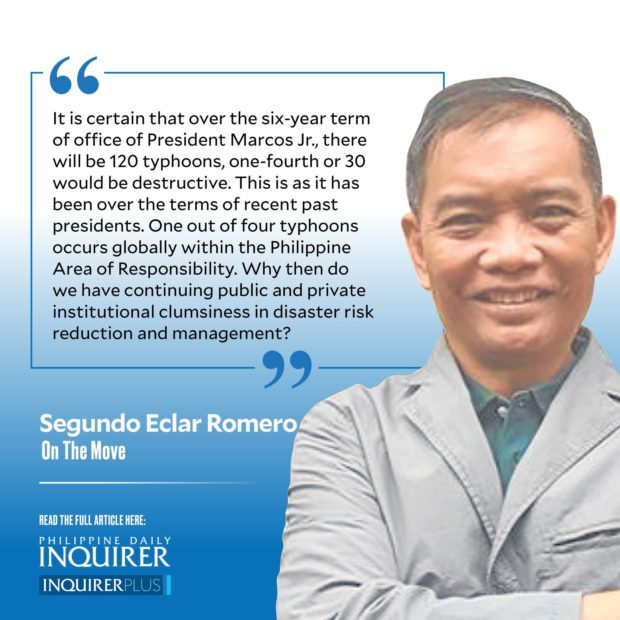
Despite the profound speeches the President had given in the United Nations General Assembly and other forums about climate change, Mr. Marcos’ real understanding of the wicked environmental problems besetting the nation is questionable. Jon Bonifacio of the environmental group Kalikasan found it “strange that it seems like it’s only now he’s come to appreciate the benefits provided by well-conserved watersheds.”
Nations are supposed to find the resolve and resilience to squarely face their specific natural and human-made challenges. Israel and Singapore, which are minority nations in ethnically dominant neighborhoods, have learned to steel and steer themselves with strategic purpose and national will to prevail.
The Philippines has its share of challenges that could trigger a rugged and robust national response. The 20 typhoons that batter the nation every year could be the equivalent of the harsh winters that many nations have learned to anticipate, plan for, and adapt to.
But after over half a millennium since a single unified administration has been established in the archipelago in 1565 by a succession of Spanish, American, and now Filipino control, we display a certain level of masochism by staying in the destructive pathways of typhoons, suffering widespread damage and despair with no visible and significant collective or individual mitigation and adaptation.
It is certain that over the six-year term of office of Mr. Marcos, there will be 120 typhoons, one-fourth or 30 would be destructive. This is as it has been over the terms of recent past presidents. One out of four typhoons occurs globally within the Philippine Area of Responsibility.
Why then do we have continuing public and private institutional clumsiness in disaster risk reduction and management? One of the most inspiring initiatives in Philippine disaster risk reduction and management was the initiation of Project NOAH (Nationwide Operational Assessment of Hazards) in 2012 by the country’s leading scientists. It was promoted as the Philippines’ flagship disaster risk reduction and management program during the Aquino administration.
The project was defunded in 2017 when the Duterte administration took over on the pretext that the innovations of Project NOAH could already be mainstreamed under the Department of Science and Technology. It was not only the scuttling of ABS-CBN and the erratic response to the COVID-19 pandemic that further debilitated Filipinos reeling from disasters. Project NOAH should be on the list of the Duterte administration’s epic follies.
Project NOAH was an all too brief renaissance surge in technological and behavioral innovation applied to getting the nation and local communities ready and resilient against hazards. It was getting international and local acclaim. Among other achievements, Project NOAH’s specific and targeted advisories enabled the municipality of Daram in Samar to preemptively evacuate in the face of Typhoon “Ruby” on Dec. 6, 2014. There were no recorded casualties even though 1,664 houses were washed away by the storm surge of Ruby.
Altogether, Project NOAH from 2012 to 2016, cost the Filipino taxpayer a measly P6.4 billion. Even in real terms, this pales in comparison with the P5 billion confidential funds of Mr. Marcos and Vice President Sara Duterte of at least P30 billion over six years.
Mr. Marcos’ post-Paeng clueless remarks could be easily forgotten if he will reconsider the revival of Project NOAH as a complementary, enriching, display of Filipino capacity to sustain national resilience-building. That will be a good start for the President as a leader able to break the prevailing wait-and-see attitude of the governing, economic, and social elite, and inspire and mobilize them to provide the leading edge to the nation.
doyromero@gmail.com